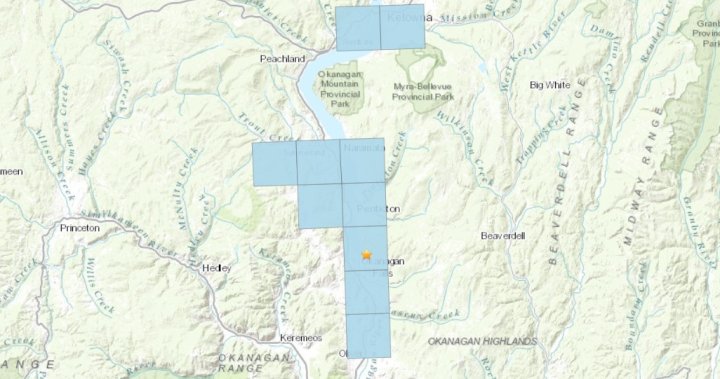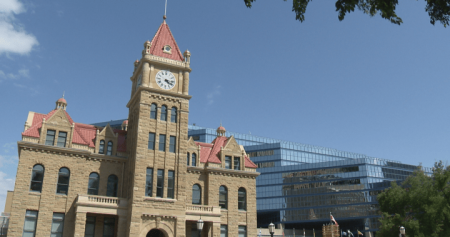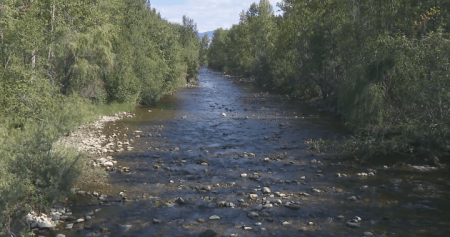A small earthquake with a magnitude of 2.6 shook parts of the South Okanagan region on Friday afternoon. The epicentre was located about 12 km southeast of Penticton, British Columbia, and the quake occurred at a depth of around 10 km. The shaking was felt in various areas including Penticton, Okanagan Falls, Kaleden, and parts of Kelowna. The U.S. Geological Survey also reported the earthquake, placing it at 4 km north-northeast of Okanagan Lakes, but at a depth of 14.4 km. Reports of people feeling the earthquake came in from various locations, including Penticton, Summerland, Oliver, Kelowna, and Oroville, Washington.
Despite the reports of shaking in different areas, there were no reports of damage following the earthquake. Earthquakes Canada noted that no damage would be expected from a quake of this magnitude. The USGS received ‘Did You Feel It?’ reports from a number of locations including Penticton, Summerland, Oliver, Kelowna, and Oroville, Washington. These reports give an indication of how widely the earthquake was felt in the region. While earthquakes can be unsettling, particularly for those who feel them, it is reassuring to know that in this instance, no significant damage occurred as a result of the seismic activity.
This earthquake serves as a reminder of the seismic activity that can occur in the region, as British Columbia is located in an area prone to earthquakes. The South Okanagan region, in particular, has experienced earthquakes in the past, with varying magnitudes. It is important for residents and officials to be prepared for the possibility of future earthquakes, even those of a small magnitude like the recent 2.6 quake. Being aware of the risks associated with living in an earthquake-prone region and having plans in place can help mitigate the impact of such natural events.
While this earthquake was relatively minor, it highlights the importance of earthquake readiness and emergency preparedness. Earthquakes can strike suddenly and without warning, making it crucial for individuals, families, and communities to have plans in place for how to respond in the event of a quake. This includes knowing what to do during an earthquake, such as “drop, cover, and hold on,” as well as having emergency supplies and communication plans in place. By being proactive and prepared, people can better protect themselves and their loved ones in the face of natural disasters like earthquakes.
In the aftermath of the earthquake, it is essential for authorities to assess any potential damage and ensure that infrastructure and buildings are safe. While there were no reports of damage from this particular earthquake, it is still important to conduct thorough checks to confirm the structural integrity of buildings and critical infrastructure. This may involve inspections by engineers and other experts to identify any weaknesses or vulnerabilities that could pose a threat in the event of future seismic activity. By taking these precautions, officials can help safeguard the community against the potential impact of earthquakes in the future.
Overall, while earthquakes are a natural phenomenon that cannot be prevented, there are steps that can be taken to mitigate their impact and ensure the safety and well-being of individuals and communities. By being informed, prepared, and proactive, residents of earthquake-prone regions like the South Okanagan can reduce the risks associated with seismic activity. The recent earthquake serves as a reminder of the importance of readiness and resilience in the face of natural disasters, emphasizing the need for ongoing preparedness efforts to protect lives and property in the event of future earthquakes.













